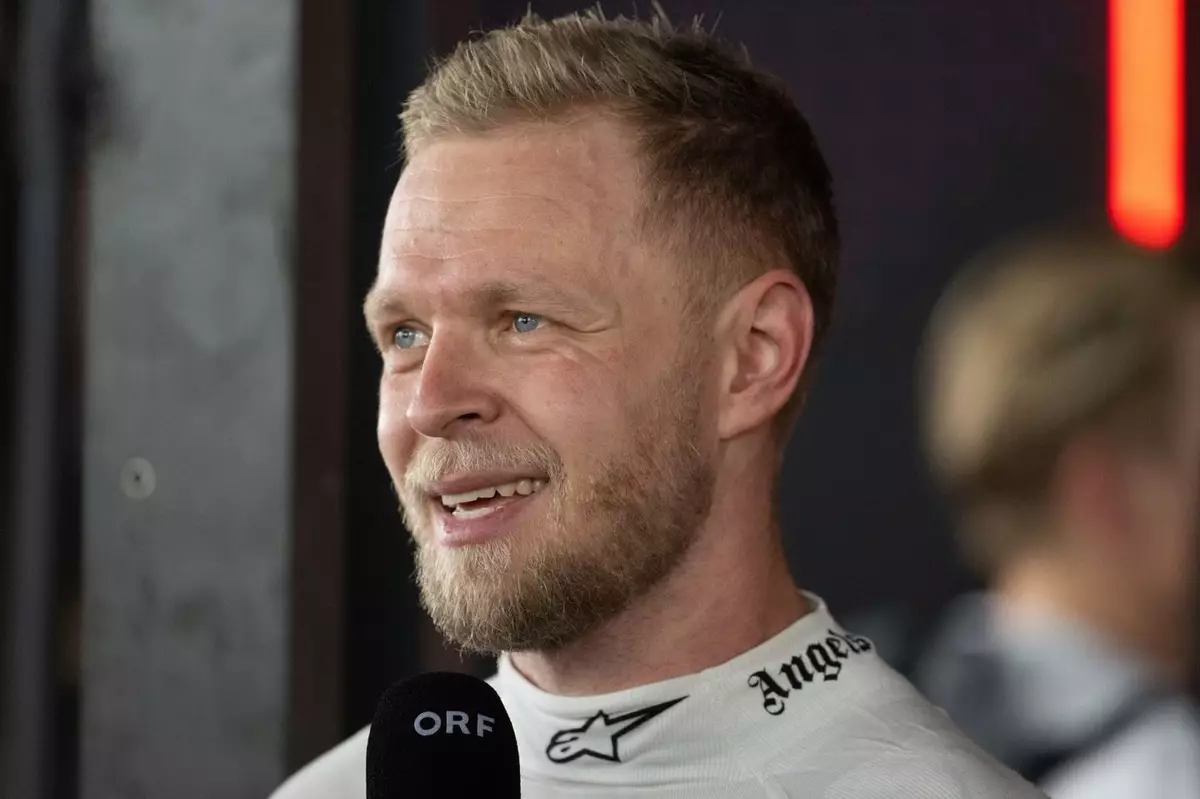Kevin Magnussen’s Transition to BMW: A New Chapter in Endurance Racing
There’s something electrifying about fresh starts and new challenges, especially when it comes to the world of motorsport. As someone who has always admired the tenacity and skill required in racing, I couldn’t help but feel a sense of excitement when I heard about Kevin Magnussen’s latest career move. Leaving behind his days with the Haas Formula 1 team, he’s now joining BMW to compete in their M Hybrid V8 LMDh car. It’s a significant shift that has many of us eagerly anticipating what lies ahead for him.
Magnussen’s move to BMW is more than just a change of scenery; it’s an opportunity for him to showcase his versatility as a driver. Having spent years watching him maneuver through the intense world of Formula 1, I’m curious to see how he’ll adapt to the endurance racing circuit. The announcement came just before his last race with Haas in Abu Dhabi, adding an extra layer of intrigue to his departure. With BMW participating in both the World Endurance Championship (WEC) and the IMSA SportsCar Championship, fans are left speculating which series he’ll tackle first.
Key Takeaways
- Kevin Magnussen transitions from Formula 1 to BMW’s endurance racing team.
- His past endurance experience includes success in the IMSA season and Le Mans.
- BMW aims high with Magnussen, reflecting their commitment to excellence.
- Excitement surrounds Magnussen’s adaptation to endurance racing dynamics.
A Foundation Built on Experience
One of the reasons why I believe Magnussen will excel in this new role is his previous experience in endurance racing. Back in 2021, he raced with Chip Ganassi Racing during the IMSA season, achieving a notable victory in Detroit alongside Renger van der Zande. That win was a testament to his adaptability and skill in longer races. Additionally, his participation in events like Le Mans and the Gulf 12 Hours has given him a solid foundation in endurance motorsport.
When you think about it, endurance racing requires a different skill set compared to Formula 1. It’s not just about speed; it’s about strategy, stamina, and teamwork. These are areas where Magnussen has shown promise, making him a valuable asset for BMW’s ambitious plans. I can’t help but recall his impressive performances at Le Mans, where he competed in the LMP2 class, and at the Gulf 12 Hours with a Ferrari 488 GT3. These experiences have undoubtedly prepared him for the challenges ahead.

BMW’s Ambitious Vision
For BMW, recruiting Magnussen isn’t just about filling a seat; it’s about making a statement in the world of endurance racing. Andreas Roos, BMW’s Motorsport boss, has praised Magnussen for his speed and expertise gained over a decade-long career in F1. Such endorsements highlight BMW’s strategic vision and their commitment to competing at the highest level. It’s clear they see Magnussen as an integral part of their LMDh program.
The dynamic nature of team line-ups means that every decision carries weight. With Nick Yelloly stepping down, there’s room for fresh talent like Magnussen to step up and make an impact. This shift emphasizes how volatile yet exciting motorsport can be, keeping us on our toes as fans and observers. We watch closely as BMW gears up for future seasons, eager to witness how these changes unfold on the track.
The Driver’s Perspective
Listening to Magnussen speak about this transition is inspiring. His enthusiasm for joining such an esteemed brand like BMW is palpable, reflecting both excitement and gratitude. Representing BMW means competing with some of the most advanced sportscars in endurance racing—a challenge he seems more than ready to embrace. There’s something genuine about his eagerness to step into this new phase while still holding onto his competitive spirit from F1.
Having witnessed his career highs—like that unforgettable podium finish on his F1 debut—it’s fascinating to think about how he’ll adapt his driving style for longer races that demand both physical endurance and mental acuity. Managers and fans alike are keenly observing how he balances these elements in pursuit of excellence on behalf of BMW. It’s an exciting time for all involved as we watch this story unfold.
The Road Ahead
As we look forward to what comes next, there’s much anticipation surrounding BMW’s strategic direction and driver line-up for upcoming seasons. The introduction of other drivers like Oliver Bearman and Esteban Ocon at Haas indicates how quickly things can change within teams—a reminder that nothing stays static for long in motorsport. With eyes set on the 2025 racing season, all signs point towards thrilling developments ahead.

Final Thoughts
Ultimately, Kevin Magnussen’s journey from F1 to endurance racing with BMW signifies both personal growth as a driver and larger shifts within motorsport itself. His story captivates fans who eagerly await each race milestone while rooting for him every step along this exhilarating path full of potential triumphs yet unknown challenges awaiting discovery around every bend! Indeed: he isn’t merely occupying space behind wheel—he aims leave indelible mark history books too!
Kevin Magnussen
BMW
Endurance Racing
Motorsport
IMSA


Leave a Reply